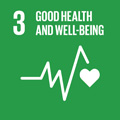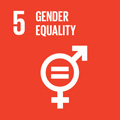- Docente: Filippo Zanotti
- Credits: 3
- Language: Italian
- Teaching Mode: Traditional lectures
- Campus: Ravenna
- Corso: First cycle degree programme (L) in Nursing (cod. 5908)
Learning outcomes
At the end of the module, the student possesses knowledge related to the care of the child and their family in the context of priority health issues in the maternal and child health area, with particular attention to preventive and educational aspects. They identify, plan, and evaluate care interventions and collaborate with other professionals in diagnostic-therapeutic pathways and educational projects.
Course contents
Obstetric-Gynecological Area
- Birth Pathway
- Definitions of: physiological pregnancy, high-risk pregnancy
- Nursing care for women with: gestational diabetes and hypertensive disorders of pregnancy, placental abruption and placenta previa, PROM, spontaneous abortion, induced abortion, IVG
- Neonatal care in the delivery room: APGAR score, extrauterine adaptation, early breastfeeding attachment
- Umbilical cord blood donation, Rooming-in, postpartum depression, inflammatory breast diseases
Neonatal-pediatric area
- Nursing care for the healthy newborn, skin and umbilical stump hygiene, neonatal jaundice, breastfeeding and formula feeding, newborn discharge, family education on home newborn care, SIDS.
- Classification of newborns.
- Nursing care for full-term newborns in neonatal intensive care, respiratory diseases, jaundice, hypoxic-ischemic encephalopathy, hypoglycemia, seizures, sepsis, born to diabetic, alcoholic, smoking, and drug-addicted mothers.
- Nursing care for premature newborns in neonatal intensive care, physiological characteristics, monitoring risks and possible complications, characteristics of the care environment, the care and N.I.D.C.A.P., postural care and skin containment, care of the newborn in an incubator, NEC, pain assessment and management, communication, involvement and support for the family of the premature newborn, milk bank.
- Nursing care for the child, Family-centered care, child's reaction to hospitalization, charter of children's rights in the hospital, characteristics of pediatric wards, main respiratory system diseases, gastroenteritis, fever and febrile seizures, head trauma, burns, type 1 diabetes, abuse and mistreatment, pain assessment and management
- Nursing management of drug therapy in neonatal and pediatric settings, dilution, dosage calculation, and administration of therapy
- Child's surgical pathwayCare for the child with hemophilia
- Planning of nursing care based on clinical cases
Readings/Bibliography
-
“Con ragione e sentimento. Le cure neonatali a sostegno dello sviluppo”. Grazia Colombo Biomedia 2011
-
“Assistenza infermieristica in pediatria”. Seconda edizione. P.Badon, S. Cesaro. Casa editrice Ambrosiana 2015.
-
“Assistenza infermieristica e ostetrica in area materno-infantile”.Seconda edizione. P. Di Giacomo, L. A. Rigon. Casa Editrice Ambrosiana. 2016
-
Diagnosi infermieristiche NANDA-I, definizioni e classificazione 2021-2023. T. Heather Herdman , Shigemi Kamitsuru. 2021
-
Calcoli e dosaggi farmacologici. La responsabilità dell'infermiere. G. Ledonne, S. Tolome
-
“Diagnosi infermieristiche con NOC e NIC”. J. M. Wilkinson. Casa editrice Ambrosiana. 2005
-
“Infermieristica in area materno-infantile”. G. Marchioni, S. Salerno, S.Scalorbi, P. Quarella. Mc Graw Hill. 2014
-
“Diagnosi infermieristiche. Definizione e classificazione 2018-2020”. Decima edizione. Casa editrice Ambrosiana. B. H. Quigley, M. L. Palm, et al.
-
“Mappe concettuali per l'assistenza infermieristica. Casi clinici per migliorare la comunicazione, la collaborazione e l'assistenza”. B. L. Yoost . Casa editrice Ambrosiana. 2018
-
“Saturazione sensoriale: semplice ed efficace contro il dolore procedurale del neonato”. C. V. Bellieni, M. G. Alagna, G. Buonocore. Dipartimento di Pediatria, Ostetricia e Medicina Riproduttiva, Università di Siena .
-
“Il trattamento specifico con Emla in pediatria” infermiera C. Biavati. Ospedale Sant'Orsola Malpighi.
-
“Promozione dell'uso di latte materno nelle unità di TIN ed accesso dei genitori ai reparti”. Raccomandazione congiunta di tavolo tecnico operativo Interdisciplinare. Ministero della Salute
-
“Ridurre il dolore da prelievo capillare nel neonato: confronto tra 6 dispositivi pungidito (To reduce painto heelprick in newborn: comparisonwith sixlancetdevices)”. G.Ballardini, A. Spruzzola, L. Boneschi ,R. Visentin, L. Boscardini, M.Barbaglia, A. Guala. Ped. Med. Chir.(Med. Surg. Ped.), 2012, 34: 182-185
-
“Protocollo di individualized family centered developmental care secondo il metodo NIDCAP (ALS, H.,2000)”. A cura di: N. Bertoncelli
-
Gravidanza fisiologica. Aggiornamento 2011. Linee giuda nazionali (www.snlg-iss.it)
-
“L' allattamento al seno: protezione, incoraggiamento e sostegno. L'importanza del ruolo dei servizi per la maternità”. Dichiarazione congiunta OMS/UNICEF. Novembre 2008
Teaching methods
Lectures with slide presentations, exercises on drug administration proportions, and analysis of clinical cases.
Assessment methods
Multiple-choice test (31 questions - only one correct answer)
Office hours
See the website of Filippo Zanotti
SDGs


This teaching activity contributes to the achievement of the Sustainable Development Goals of the UN 2030 Agenda.
